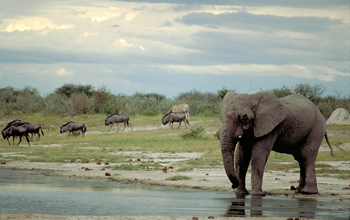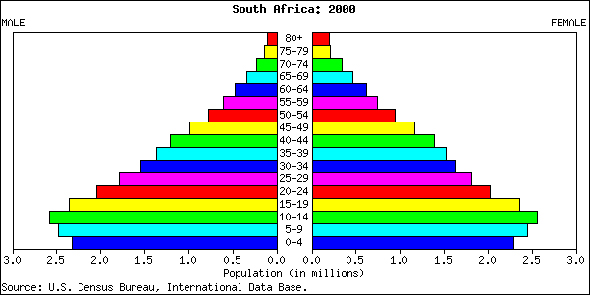Action Démocratique Quebec: A Pro-Family Party in Quebec, Canada
March 19, 2008
The Action Démocratique Quebec, or ADQ, gained official status as a political party in the 2007 election, when it won 31% of the province’s popular vote and placed 41 members into the National Assembly. The organization promotes a populist notion that the government is ineffective, a desire to reduce the size of government, and a moderate (for Quebec) desire for provincial autonomy rather than either secession or complete loyalty to Canada.
In addition, the party has taken a strong stance on support for the family. ADQ states, “Moreover, in the current context of a declining birthrate, our concerns over demographic renewal and our sustainability as a society are well-founded. The narrow approach of successive former governments to the family must give way to political action that encourages couples to increase the size of their families, support couples who are struggling with infertility issues, and facilitate the adoption process.”
An official release go on to state:
The ADQ commits to:
- Restoring freedom of choice to parents. Provide all families a significant allowance for each child not attending a subsidized day-care centre.
- Encouraging the birth of a 3rd child and more. Give a $5,000 allowance for the birth or adoption of a 3rd or additional child.
- Supporting student parents. Implement a free scholarship program for parents of up to an 18 month old child to allow them to pursue or return to their studies.
- Including fertility treatment within the public health insurance range of services. Recognize infertility as a medical condition, and provide reasonable financial support toward the cost of infertility treatments of alternative methods of procreation.
- Streamlining adoption. Simplify adoption procedures in Quebec and provide financial support to parents adopting children from abroad.
- Helping families through school learning support programs. Assist primary schools that are willing to implement extra homework programs to help children whose families cannot do so.
Throughout the developed world, governments have failed to respond adequately to collapsed fertility rates. As resultant financial crises grow, a number of political parties have begun to take stances to promote and strengthen families with children. Hopefully, their proposed programs will meet with some success, and hopefully governments will adjust spending to deal with an ultimate, unavoidable fall in fertility rates. No body of land can support an infinite population. At some point, the growth in human numbers must cease.
The 2006 fertility rate of Quebec was 1.62 children per woman. More information on ADQ can be found in French here, and in English here.
African Conflict: Humans and Wildlife in Competition
March 19, 2008
 With fertility rates like Uganda’s 6.84 and the Democratic Republic of the Congo’s 6.37, Africa faces a massive challenge to reduce its rate of population growth. No nation on the continent can lay claim to a high level of development, though some pockets exist. As a result, humans already stress infrastructures far beyond what they can comfortably support. Even South Africa, with a 2.16 fertility rate, expects to increase its numbers by a significant amount over the next several decades due to its large proportion of youths.
With fertility rates like Uganda’s 6.84 and the Democratic Republic of the Congo’s 6.37, Africa faces a massive challenge to reduce its rate of population growth. No nation on the continent can lay claim to a high level of development, though some pockets exist. As a result, humans already stress infrastructures far beyond what they can comfortably support. Even South Africa, with a 2.16 fertility rate, expects to increase its numbers by a significant amount over the next several decades due to its large proportion of youths.
Despite the AIDS epidemic, the United Nations medium variant forecasts that Africa’s population will exceed 2 billion by 2050, more than double its current level. In addition, this estimate is based on an assumption of greatly reduced fertility rates, which might not be realized.
While the figures for humans continue to grow at a breakneck pace, wildlife conservation efforts have enjoyed some promising results. Unfortunately, these developments have led, in some cases, to human-animal conflicts.
According to research reported in the Proceedings of the National Academy of Sciences, 23,000 African elephants were slaughtered for their tusks during 2006. Though this has led to a further decline in numbers across much of central Africa, Southern Africa, home to nearly 60% of the continent’s elephants, has witnessed a significant growth in the animals’ count. For example, in South Africa’s Kruger National Park, culling ended in 1994. Since then, the population has increased by 75% to 14,000, and this number is expected to double by 2020.
Problems arise because an adult elephant consumes up to 660 pounds of vegetation a day. This brings them into conflict not only with farmers but with other species as well. In northern Botswana, subsistance farmers see as much as 40% of their crops destroyed by elephants. Proposals for further culling are now on the table, though they are highly controversial. Other options are also being explored, such as relocation and reduction in the number of watering holes.
As the continent’s human population continues to rise, competition between wildlife and humans may become more severe.
Overview of the Problems Associated with Fertility Rates
March 12, 2008
In the developed world, fertility rates have fallen to dangerous levels. In the developing world, high fertility rates continue to stress overburdened infrastructures.
Even in Iran, the population is exploding. Though fertility rates there have fallen below replacement level, high birthrates in the recent past have led to a disproportionate number of young adults, many of whom are now having children.






